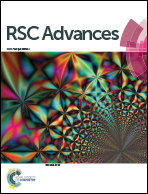Sticky superhydrophobic hard nanofibers from soft matter
Abstract
Here, we show the possibility to change superhydrophobic properties from soft to hard polymer nanofibers by the control of molecular structure and branching. In fact, we report the synthesis of original monomers derived from 3,4-propylenedioxythiophene (ProDOT) and bearing two branched alkyl chains and their electrodeposition by cyclic voltammetry. We point out that the hydrocarbon moiety (cheaper, readily available, non-toxic) can be an alternative to long fluorocarbon chains (expensive, requiring extensive synthesis, bioaccumulable) to achieve anti-wetting properties. Moreover, we show that the change in the size of branched chains can affect the surface morphology, from soft to hard nanofibers with a high increase in water adhesion due to a lower intrinsic hydrophobicity (sticky superhydrophobicity or parahydrophobicity). We demonstrate the possibility to produce them from soft matter, i.e. polymers. In the case of the hard nanofibers, cross-section images reveal that these fibers are vertically aligned to the substrate. Moreover, we show that the height and the diameter of the hard nanofibers, as well as the distance between the fibers can be controlled by the number of deposition scans. Such materials could be used for biomedical applications, for example.


 Please wait while we load your content...
Please wait while we load your content...